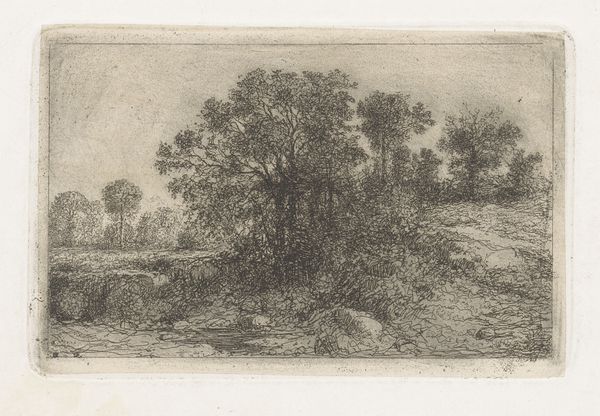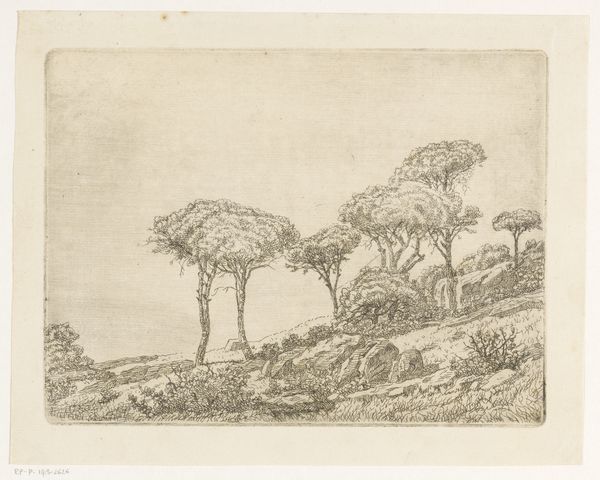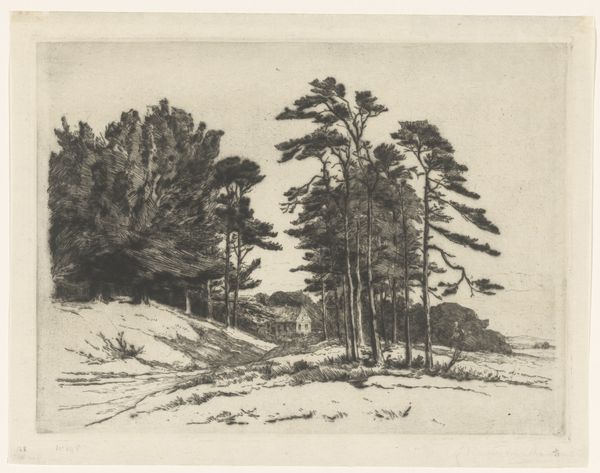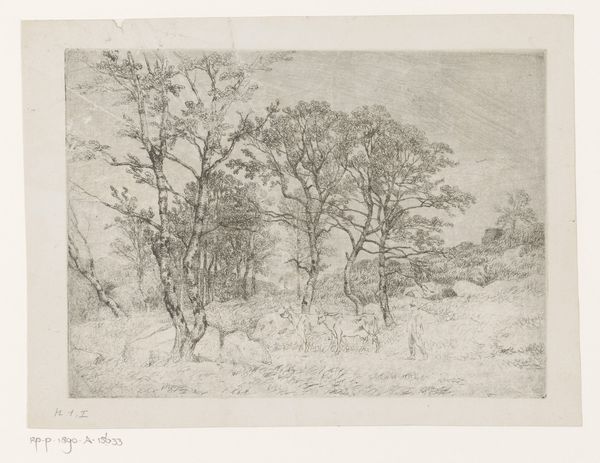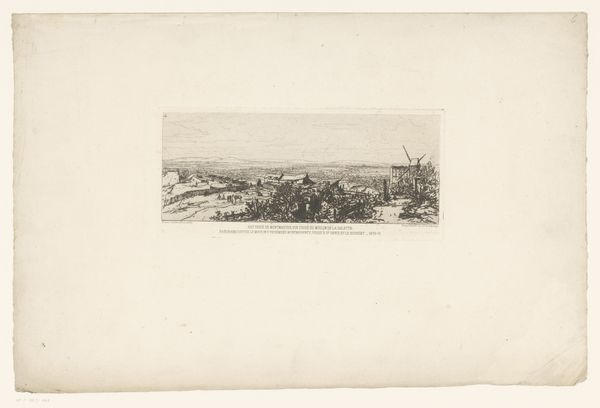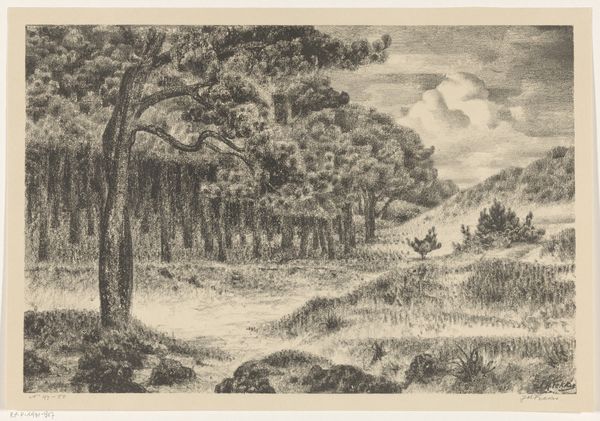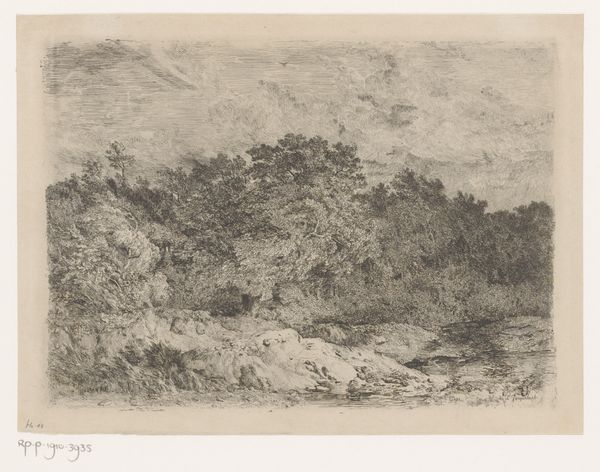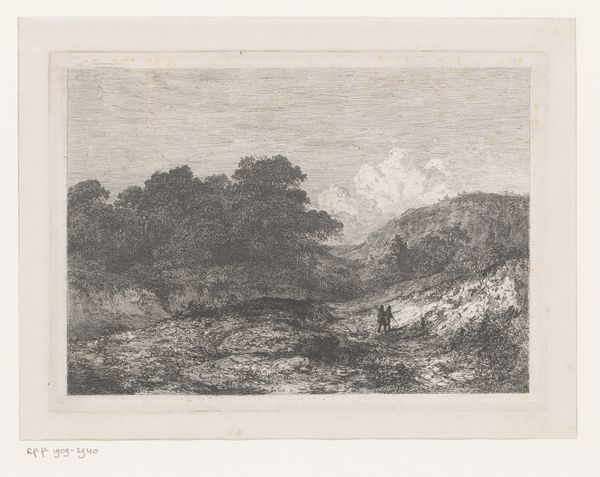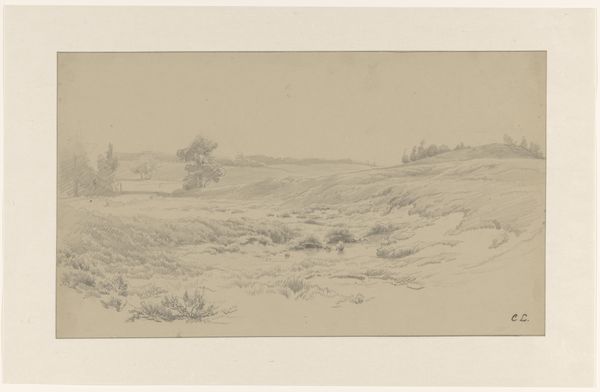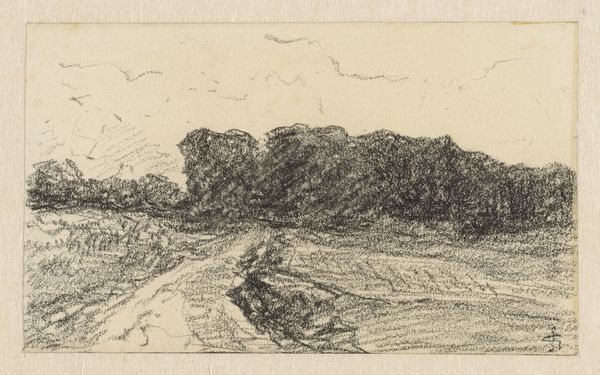
drawing, print, etching
#
drawing
# print
#
etching
#
landscape
#
line
#
realism
Dimensions: height 80 mm, width 120 mm
Copyright: Rijks Museum: Open Domain
Curator: Before us is “Heuvellandschap met drie dennen,” or “Hill Landscape with Three Pines,” an etching and print made sometime between 1870 and 1932, attributed to Frederik van Eeden. It is currently held in the collection of the Rijksmuseum. Editor: There’s something stark and compelling in the density of those etched lines; it makes the scene almost vibrate. It evokes a sense of solitude but also quiet resilience. Curator: I agree, the deliberate line work shapes a narrative around our understanding of landscapes. This scene feels very northern European, especially when thinking about how ideas of nature were developing during that period, connected to notions of nationhood and identity. Editor: Thinking about the material choices—the etching medium itself—it lends a particular texture, doesn’t it? You see the labour involved. The way the artist captured the subtle shifts in light suggests the skill and time invested in manipulating the copper plate. It invites contemplation on the industrialization occurring, impacting both the art world and production, even in rural scenes like this. Curator: Absolutely. The piece exists in dialogue with these transformations, both mirroring the physical landscape and hinting at its cultural significance. The artist’s choice to depict these relatively unremarkable pine trees within the undulating hills can also be read as a nod to Dutch painting traditions, and perhaps to an anti-establishment critique of traditional landscape art. The social impact of representing a “humble” view over more idealized or allegorical subjects becomes evident when contextualizing it with broader socio-political currents of that time. Editor: Yes, that focus on the ordinary is interesting. And thinking about its social context, such landscape etchings were accessible—part of a larger print market that disseminated images to a wider audience. It questions notions of value – is it the labor-intensive printmaking process that gives this image worth or is the worth created by wider accessibility, reaching more people? It also begs to understand where did he acquire the copper to create this scene? Curator: These questions enrich our understanding of art’s multiple layers! Seeing the intersectionality embedded within landscape artwork helps connect this piece to current debates about sustainability, accessibility, and representation. Editor: It reminds us to stay alert to how social context, labour and material intersect in something seemingly simple like a landscape print.
Comments
No comments
Be the first to comment and join the conversation on the ultimate creative platform.
